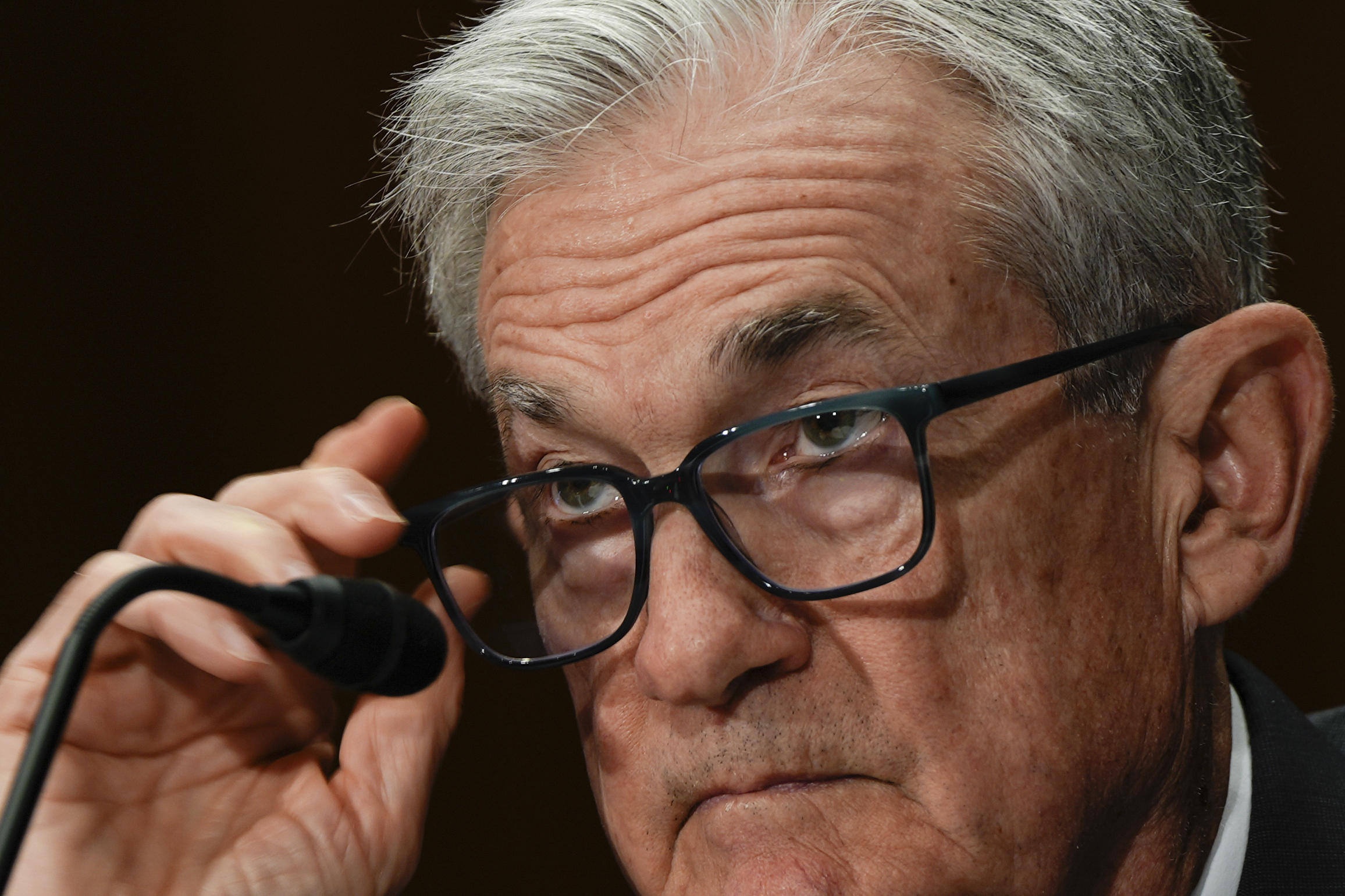A new wave of speculation about the future of Federal Reserve President Jerome Powell has caused a small storm in the markets this Wednesday. Investors woke up to news of a closed-door meeting between President Donald Trump and congressmen from his party where the possibility of abruptly dismissing Powell was openly discussed, relying on the White House's campaign to discredit the central banker, accusing him of renovating the institution's headquarters with all kinds of luxuries using taxpayers' money.
In the meeting, as reported by The New York Times, the president brandished a letter, supposedly with the banker's dismissal and his signature, and asked if he should send it. Republican congresswoman Anna Paulina Luna from Florida posted a very clear message on the X social network while in the room: "Jerome Powell will be fired. The dismissal is imminent," she celebrated.
After an initial sharp decline, the stock markets rebounded from their lows when the president, from the Oval Office, stated that he "does not plan to do anything" with the Fed president, at least for now, and that those discussions with politicians were only theoretical scenarios. The market, as it did with tariffs, clings to a glimmer of hope because Trump's words are anything but reassuring. The dollar, which has had its worst start to a year in six months since the 1970s, moderated its decline but still remains down by 0.2%.
After criticizing Powell's work, insisting that he is "terrible" and very bad as a central banker, and telling him that he should have lowered interest rates a long time ago, as the ECB has done in Europe, the president only responded evasively to the question of whether he is preparing a dismissal: "We do not plan to do anything," he first told reporters at the White House. "I do not rule anything out, highly unlikely... unless he has to leave for fraud" he added as a conclusion. And there lies the key. Dismissing him, or forcing him to leave, in exchange for not going after him under the pretext of works that will be completed when he is no longer in charge of the institution.
Trump desperately needs him to leave to complete his plan, which involves tariffs and cheaper loans if he manages to lower interest rates to 1%, an impossible goal in the short term since they are currently at 4% and there are clear inflationary pressures and doubts about the growth composition. None of that seems important, and his economic team not only does not disagree but seems to fuel those theories, while all senior officials and advisors position themselves personally as possible replacements for Powell.
Therefore, for over six months, they have been criticizing him, insulting him, trying to ridicule him, publicly and privately. The president has tried all imaginable pressures, but to his immense frustration, they do not work. "I insult him in every possible way to make him do something. I do it in every possible way. I am unpleasant. I am kind. Nothing works," he admitted without hesitation last month in front of the cameras. But Powell, appointed by Trump in November 2017, renewed by Joe Biden, and whose term ends in May 2026, does not take the hint. He continues in his position with no intention of resigning, continues to lead the front that considers lowering interest rates very premature due to the uncertainty created by Trump's economic policies. And he continues to speak in his interventions about the inflationary risk and the impact on GDP of tariffs, the administration's flagship proposal.
Exhausting traditional avenues, the government has turned to less orthodox methods. For the past two weeks, the administration has been accusing Powell of being responsible for the cost overrun of the Federal Reserve headquarters renovations, claiming without any evidence that they will cost $800 million more than planned not because materials or labor have become more expensive, but due to the central banker's alleged love for luxury. "The renovation amounts to $2.5 billion, approximately $700 million more than its initial cost. These renovations include rooftop gardens, fountains, VIP elevators, and top-quality marble. The cost is double that of renovating a common and ordinary historic federal building. The Palace of Versailles would have cost $3 billion in today's dollars!" wrote the White House Budget Director in an official letter.
It is not just that. The president's team has launched a defamation campaign with his most loyal supporters in Congress and the media, based on the idea that Powell lied in his appearances in Congress. And that would be more than enough reason for his dismissal. It would not be due to his monetary decisions, but for other reasons. And therefore, legal.
That is the backdoor to execute his dismissal if Powell does not step aside first. Because Trump cannot do it easily. He has considered it, his legal services have studied it thoroughly, and although they believe they have a chance, the Supreme Court's position on this matter (unlike the rest of the dismissals of officials and regulators since January, which the high court has been endorsing) is that it would be illegal without a justified cause. And not lowering interest rates to the Executive's liking is not one.
Despite the apparent calm of the last three months, during which it has recovered much of what was lost after the declaration of a trade war against the entire planet, the markets do not take well to this type of interference, reminiscent of Recep Tayyip Erdogan, which, if anything, has led to inflation above 30%. Firing Powell would not only imply a legal battle over the limits of Trump's authority, but it would inevitably disrupt the markets, especially the bond markets. A Fed president more than willing to significantly lower interest rates (or rather to push for it, as the Fed's board votes on decisions) could be welcomed in risk assets such as stocks.
